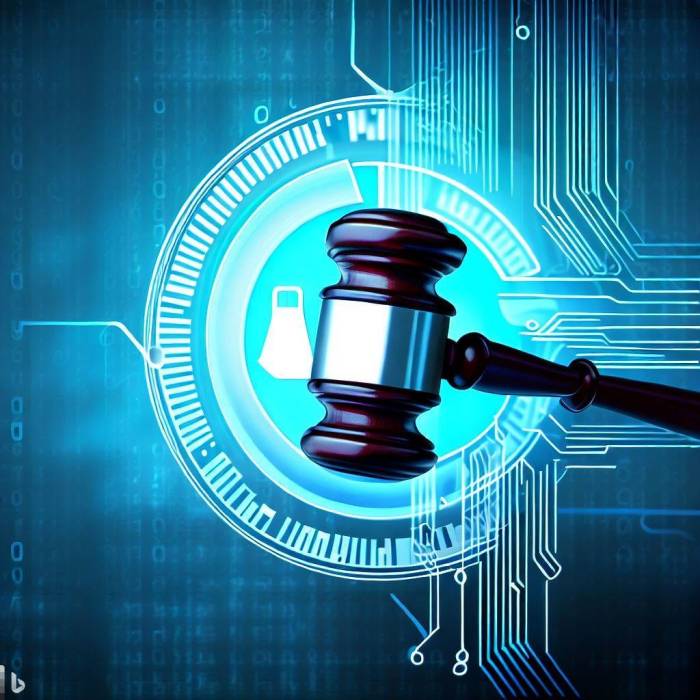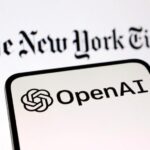A really good paper on AI law and child abuse explores the complex intersection of artificial intelligence (AI) and the crucial need to protect children. It delves into the current legal frameworks governing AI development and deployment, examining how these frameworks might be strengthened to address the unique vulnerabilities of children in the digital age. The paper will also examine the potential of AI to prevent and investigate child abuse, considering both the benefits and the ethical challenges involved.
A critical analysis of existing case studies and examples will further illuminate the complex relationship between AI and child protection.
The paper is structured around six key sections: introduction, AI systems for prevention, AI in investigations, ethical considerations, future directions, and case studies. Each section will utilize tables to visually represent the key information, making it easier for the reader to follow the arguments and supporting evidence. This structured approach will ensure clarity and facilitate a thorough understanding of the topic’s intricacies.
Introduction to AI Law and Child Abuse

Artificial intelligence (AI) is rapidly transforming various aspects of our lives, from healthcare and education to entertainment and law enforcement. AI systems, powered by complex algorithms and vast datasets, are capable of performing tasks previously exclusive to human intelligence, including image recognition, natural language processing, and decision-making. This transformative power, however, necessitates careful consideration of the legal and ethical implications, particularly concerning vulnerable populations like children.Current legal frameworks addressing AI development and deployment are largely reactive and evolving.
Existing laws often struggle to keep pace with the rapid advancements in AI technology, creating gaps in protection for children. This necessitates a proactive approach to ensure that AI systems are not only effective but also ethical and safe, especially when interacting with children. The potential for harm, including exploitation and abuse, necessitates a robust legal and ethical framework.
Overview of AI Types and Applications
AI encompasses a wide spectrum of technologies, each with unique capabilities and potential applications. Machine learning (ML), a subset of AI, allows systems to learn from data without explicit programming. Deep learning (DL), a more sophisticated form of ML, utilizes artificial neural networks to perform complex tasks. Natural Language Processing (NLP) empowers AI to understand and respond to human language.
Computer vision (CV) enables AI systems to interpret visual data.These technologies find application across numerous sectors. AI-powered image recognition is used in facial recognition systems, while NLP powers virtual assistants and chatbots. DL models are employed in medical diagnosis and fraud detection. CV is used in self-driving cars and object detection. These applications can impact children’s lives directly or indirectly, potentially exposing them to risks.
Vulnerabilities of Children in the Context of AI
Children, due to their developmental stage and lack of experience, are particularly vulnerable to the potential harms of AI. Their limited understanding of online risks and the complexities of technology can leave them exposed to exploitation, abuse, and harassment. AI systems, if not designed and deployed with appropriate safeguards, can exacerbate these vulnerabilities. The ease with which AI systems can be used to create and disseminate harmful content further compounds this risk.
Legal and Ethical Concerns Surrounding AI and Child Abuse
Existing legal frameworks, often developed before the widespread use of AI, may not adequately address the unique challenges posed by AI-facilitated child abuse. This lack of clarity in the legal landscape leads to ethical dilemmas for developers, policymakers, and law enforcement. Data privacy concerns, algorithmic bias, and the potential for automated decision-making systems to perpetuate harm are all significant concerns.
The potential for AI-driven surveillance to violate children’s privacy is another crucial issue.
Table: AI, Applications, Legal Implications, and Child Vulnerability
| AI Type | Application | Legal Implications | Child Vulnerability |
|---|---|---|---|
| Machine Learning (ML) | Personalized learning platforms, targeted advertising | Data privacy, potential for bias in algorithms | Exposure to inappropriate content, manipulation by algorithms |
| Deep Learning (DL) | Content moderation, image generation | Accountability for AI-generated content, potential for misinformation | Exposure to harmful or misleading content, potential for creation of synthetic child abuse material |
| Natural Language Processing (NLP) | Chatbots, virtual assistants | Misinformation, inappropriate responses | Exposure to inappropriate interactions, potential for grooming |
| Computer Vision (CV) | Facial recognition, surveillance systems | Privacy violations, potential for misuse | Surveillance without consent, lack of transparency in systems |
AI Systems and Child Abuse Prevention
Artificial intelligence (AI) offers a powerful new tool in the fight against child abuse. Its ability to analyze vast amounts of data and identify patterns can help identify potential risks and facilitate faster interventions, potentially saving lives. This exploration delves into the practical applications of AI in child protection, examining the types of AI systems, their methods, and the critical issue of bias.AI’s potential in this area is significant, moving beyond traditional methods to create proactive and potentially life-saving strategies for protecting children.
This involves utilizing algorithms to process data, identify patterns, and flag situations that warrant immediate attention, potentially preventing harm before it occurs. However, the integration of AI into child protection necessitates careful consideration of potential biases and ethical implications.
Types of AI Systems for Child Abuse Prevention
AI systems for child abuse prevention encompass a range of technologies. These include machine learning algorithms, natural language processing (NLP) models, and computer vision systems. Each type offers unique strengths in different contexts.
- Machine Learning (ML) algorithms can be trained on datasets of known child abuse cases to identify patterns and predict the likelihood of future abuse. These models can analyze various factors, including behavioral patterns, communication styles, and environmental indicators, to generate risk scores.
- Natural Language Processing (NLP) can analyze text-based communication, such as social media posts, online forums, and instant messages, for clues about potential abuse. NLP can identify potentially abusive language, emotional distress, or threats within the content.
- Computer Vision systems can analyze images and videos to identify potential signs of abuse, such as injuries or distress behaviors. These systems can analyze facial expressions, body language, and other visual cues to help identify situations that require immediate intervention.
Methods Employed by AI Systems
AI systems employ various methods to detect and respond to potential child abuse situations. These methods range from data analysis to automated flagging systems.
- Data Analysis involves the processing of vast datasets of information, including child welfare reports, medical records, and social media interactions. Algorithms identify patterns and anomalies indicative of potential abuse, generating alerts for human review.
- Automated Flagging Systems use AI to automatically flag potentially problematic situations for human investigation. This can expedite the process of identifying and addressing potential abuse cases, potentially preventing further harm.
Potential Bias in AI Systems
A critical consideration in the use of AI for child abuse detection is the potential for bias in the algorithms. This bias can stem from various sources, including the data used to train the model or the design of the algorithm itself.
- Data Bias arises when the training data used to develop the AI model reflects existing societal biases. If the training data disproportionately represents certain demographics or types of abuse, the AI model may perpetuate these biases in its predictions.
- Algorithmic Bias refers to biases inherent in the design or structure of the AI algorithm itself. This can result in inaccurate or unfair predictions, particularly for underrepresented groups.
Integration into Existing Child Protection Systems
AI can be seamlessly integrated into existing child protection systems, enhancing their effectiveness and efficiency. This integration involves integrating AI tools into existing workflows and protocols.
- Workflow Integration involves incorporating AI tools into the daily operations of child protection agencies, streamlining processes and reducing response times.
- Data Sharing Protocols involve developing standardized data sharing protocols to ensure that relevant information is accessible to AI systems for analysis, while maintaining privacy and security.
AI Applications for Child Abuse Prevention
| AI Application | Prevention Mechanisms | Potential Biases |
|---|---|---|
| Machine Learning Models | Analyze risk factors, predict likelihood of abuse | Data bias reflecting societal biases, lack of representation for specific groups |
| Natural Language Processing | Identify abusive language, emotional distress, threats in online communication | Bias in language models, potential misinterpretation of context |
| Computer Vision | Detect injuries, distress behaviors in images/videos | Bias in training data, potential for misinterpreting non-verbal cues |
AI’s Role in Child Abuse Investigation
AI’s potential to revolutionize child abuse investigations is substantial. By analyzing vast amounts of data, AI systems can potentially identify patterns and indicators that might otherwise go unnoticed by human investigators. This capability holds the promise of accelerating investigations, increasing the likelihood of successful prosecutions, and ultimately, protecting children. However, the implementation of AI in this critical field requires careful consideration of ethical implications and limitations.
AI’s Analytical Capabilities in Identifying Abuse Patterns
AI algorithms can process and analyze large datasets of information, including child welfare reports, medical records, social media activity, and even communication patterns. This ability allows AI to identify subtle, yet significant, correlations and anomalies that could indicate potential child abuse. For instance, recurring themes or patterns in a child’s behavioral descriptions, reported by different sources, can be flagged by AI, drawing attention to potential risks.
The speed and scale at which AI can perform these analyses are unmatched by human investigators. This increased efficiency can accelerate the identification of potential victims and perpetrators.
Potential Limitations and Ethical Considerations
Despite its potential benefits, the use of AI in child abuse investigations raises important ethical and practical considerations. One significant limitation is the potential for bias in the algorithms. If the training data reflects existing societal biases, the AI may perpetuate and amplify those biases in its analysis. This could lead to false positives or, conversely, the overlooking of legitimate cases of abuse.
Furthermore, the accuracy of AI-generated insights relies heavily on the quality and comprehensiveness of the input data. Incomplete or inaccurate data can lead to flawed conclusions and misdirected investigations. Maintaining data privacy and security is also crucial. The sensitive nature of the data necessitates robust safeguards to prevent unauthorized access and misuse.
Examples of AI Tools in Similar Investigations
Several AI tools are already being developed and used in investigations related to crime prevention, fraud detection, and risk assessment. These tools are not yet widely implemented in child abuse cases due to the complex ethical considerations and the unique challenges presented by the sensitivity of the data. However, the potential for similar applications in child abuse investigations is substantial.
A Table of AI Tools for Child Abuse Investigation (Illustrative)
| AI Tool | Functionality | Limitations |
|---|---|---|
| Image Recognition System | Identifies potential signs of abuse in images, such as bruises, injuries, or unusual markings. | Requires high-quality images, may not detect subtle signs, and can be misled by staged images or misinterpreted non-abuse situations. |
| Natural Language Processing (NLP) System | Analyzes text data from reports, social media, and other sources to identify potential patterns and correlations associated with abuse. | Reliance on the quality and consistency of text data, difficulty in distinguishing between normal child behavior and potential abuse indicators, potential bias based on language usage. |
| Predictive Modeling System | Predicts the likelihood of a child experiencing abuse based on various factors. | Requires extensive data, potential for discrimination based on factors like race, socioeconomic status, or family history, and requires thorough validation. |
Ethical Considerations in AI and Child Abuse

The burgeoning use of artificial intelligence (AI) in various fields presents both exciting possibilities and complex ethical challenges. Applying AI to child abuse prevention and investigation is no exception. This necessitates a careful examination of the ethical implications, ensuring responsible development and deployment to maximize benefits while mitigating potential harms. AI systems must be designed and implemented with a profound understanding of the vulnerable nature of children and the critical need for protecting their well-being.AI’s potential to revolutionize child abuse detection and response is undeniable, but this potential must be carefully managed within a robust ethical framework.
This framework must consider the sensitive nature of child abuse cases, the potential for bias in AI algorithms, and the critical importance of data privacy and security. Transparency and accountability are crucial to building trust and ensuring that AI systems are used ethically and effectively.
That paper on AI law and child abuse was seriously insightful. It really got me thinking about the complex issues surrounding AI and its potential impact on vulnerable populations. Meanwhile, I stumbled across this fascinating update on the fuckjerry elliot tebele meme joke aggregator repost new policy change here. While seemingly disparate, the two topics both highlight how quickly technology is evolving and the need for careful consideration of its implications.
Hopefully, these developments will lead to better protections for children in the digital age, as discussed in that excellent paper.
Ethical Dilemmas in AI-Based Child Abuse Detection
AI systems, designed to identify patterns indicative of child abuse, can inadvertently perpetuate existing biases. These biases can arise from the training data itself, which may reflect societal prejudices or historical inaccuracies. If not carefully addressed, such biases can lead to false positives, potentially harming innocent individuals, or false negatives, failing to detect genuine cases of abuse. Furthermore, the inherent complexity of human behavior and the nuances of child abuse can be difficult for AI to capture, potentially leading to errors in judgment.
Data Privacy and Security in AI for Child Abuse Prevention
Protecting the privacy and security of data used to train and operate AI systems is paramount. This includes ensuring that data collected from various sources – social media, online interactions, and even surveillance footage – is handled responsibly and ethically. Robust data encryption, access controls, and strict adherence to privacy regulations are essential. Furthermore, clear consent mechanisms must be in place for the collection and use of data, especially concerning children.
A failure to address data privacy could expose vulnerable children to further harm, or lead to inappropriate profiling or discrimination.
I just finished reading a fascinating paper on AI law and child abuse. It really got me thinking about the complexities of safeguarding children in a world increasingly reliant on technology. Interestingly, this got me pondering the latest tech race, like the Samsung Galaxy S25 Plus vs iPhone 16 Plus, samsung galaxy s25 plus vs iphone 16 plus , and how these advancements might influence future legal challenges.
Ultimately, though, the paper’s insights on AI’s role in child protection are quite profound and deserve further discussion.
Potential for Misuse of AI in Child Abuse Cases
AI systems, if not properly designed and regulated, could be misused in child abuse cases. For example, an overly aggressive or poorly calibrated system could lead to unwarranted investigations or accusations. There is also a potential for misuse by malicious actors, who might manipulate AI systems to target or exploit children. These issues underscore the need for stringent oversight and careful evaluation of AI systems in this critical context.
Clear guidelines and ethical frameworks are needed to prevent the misuse of such technology.
Transparency and Accountability in AI-Based Child Abuse Response Systems
Transparency in AI systems is essential for accountability and trust. Users need to understand how the system arrives at its conclusions, enabling a degree of oversight and validation. Similarly, mechanisms for accountability must be in place to address any errors or biases that emerge. This may include independent audits, human review processes, and clear lines of responsibility for system outputs.
I just finished reading a really good paper on AI law and child abuse, and it got me thinking about the broader implications of technology. It’s fascinating how quickly things like AI are developing, especially when you consider the White House’s official Reddit account posting about hurricane relief efforts here. This highlights the need for strong legal frameworks to protect vulnerable populations, like children, from the potential harms of AI.
Getting back to the paper, the author’s insights on this intersection of technology and child welfare are really compelling.
Lack of transparency and accountability can lead to a loss of public trust and hinder the effective implementation of AI in this critical area.
Comparison of Ethical Frameworks for AI and Child Abuse
| Ethical Framework | Key Principles | Application to AI and Child Abuse |
|---|---|---|
| Utilitarianism | Maximizing overall happiness and well-being | AI systems should be designed to minimize harm and maximize the positive impact on child well-being, considering the potential impact on all parties involved. |
| Deontology | Adherence to moral duties and rules | AI systems should respect the rights and dignity of children, avoiding potential harm and ensuring adherence to legal and ethical standards in data collection, use, and decision-making. |
| Virtue Ethics | Cultivating virtuous character traits | AI developers and users should strive for integrity, compassion, and responsibility in their use of AI systems to protect children, promoting ethical conduct and preventing exploitation. |
Future Directions and Challenges: A Really Good Paper On Ai Law And Child Abuse
The burgeoning field of AI presents both unprecedented opportunities and daunting challenges in safeguarding children from abuse. As AI systems become more sophisticated, their potential impact on child protection strategies is significant, demanding careful consideration of both the benefits and limitations. This section explores emerging trends, potential applications, and the crucial challenges that must be addressed to ensure responsible and effective use of AI in this sensitive domain.
Emerging Trends in AI and Child Protection
AI is rapidly evolving, introducing novel techniques and applications that promise to enhance child protection efforts. Machine learning algorithms, for instance, are being trained on vast datasets of child-related images, videos, and text to identify subtle signs of abuse or neglect. Natural language processing (NLP) is also being employed to analyze online conversations and social media posts to detect potential risks and threats.
Furthermore, advancements in computer vision are enabling the development of automated systems for analyzing facial expressions and body language, potentially helping to identify children who may be experiencing distress.
Potential Impact of AI on Future Child Protection Strategies
AI’s potential to revolutionize child protection is undeniable. Automated systems can process large volumes of data far more efficiently than humans, enabling rapid identification of potential abuse cases. This can lead to faster interventions, potentially saving lives and preventing long-term harm. AI-powered tools can also personalize support services for children, tailoring interventions to specific needs and risk factors.
Moreover, predictive modeling using AI can help identify children at high risk of abuse, enabling preventative measures and proactive interventions.
Challenges and Limitations of Current AI Systems in Addressing Child Abuse
While the potential of AI is significant, current systems face several limitations in effectively addressing child abuse. Bias in training data can lead to inaccurate or unfair predictions, potentially misidentifying vulnerable children or overlooking cases of abuse. Data privacy and security are also critical concerns, as AI systems often require access to sensitive information about children. The need for human oversight and validation is paramount to ensure that AI systems are used responsibly and ethically.
Furthermore, the lack of standardized protocols and ethical guidelines for AI in child protection is a critical gap that needs immediate attention.
Future Research Directions for Improving AI-Based Child Protection Systems
To maximize the benefits and minimize the risks of AI in child protection, future research should focus on several key areas. Addressing bias in training data is crucial, requiring diverse and representative datasets to avoid perpetuating harmful stereotypes. Robust methods for ensuring data privacy and security need to be developed and implemented. Clear ethical guidelines and standardized protocols for AI use in child protection should be established.
Further research is needed to develop more sophisticated algorithms that can identify subtle indicators of abuse and neglect.
Table: Future Challenges and Potential Solutions for AI in Child Protection
| Challenge | Potential Solution |
|---|---|
| Bias in training data | Develop diverse and representative datasets; Implement methods for detecting and mitigating bias; Incorporate human oversight and validation |
| Data privacy and security | Employ robust encryption and anonymization techniques; Implement strict access controls and data governance policies; Develop transparent and auditable AI systems |
| Lack of standardized protocols and ethical guidelines | Establish clear ethical guidelines and best practices for AI use in child protection; Create interdisciplinary collaborations between AI experts, child protection professionals, and policymakers |
| Limited ability to identify subtle indicators | Develop more sophisticated algorithms; Integrate multiple data sources (e.g., social media, school records); Improve feature engineering for detecting subtle patterns |
| Over-reliance on AI | Maintain human oversight and validation of AI-generated findings; Focus on training child protection professionals on the appropriate use of AI tools; Develop strategies to ensure human-AI collaboration |
Case Studies and Examples
AI’s potential to revolutionize child protection is significant, but its practical application requires careful consideration of its limitations and ethical implications. Real-world case studies are crucial to understanding both the promise and pitfalls of deploying AI in this sensitive domain. These examples highlight the need for rigorous testing, ongoing evaluation, and ethical frameworks to ensure responsible AI implementation in child protection.
AI Systems in Child Protection Contexts, A really good paper on ai law and child abuse
AI is being integrated into various child protection tools, offering new avenues for identifying and preventing child abuse. These systems leverage diverse data sources, ranging from social media activity to geospatial information, to detect patterns that might indicate potential harm. This integration can significantly expand the scope of child protection efforts, going beyond traditional methods.
Specific Case Studies
Numerous projects are exploring the use of AI in child protection. One example involves utilizing machine learning algorithms to analyze social media posts and other online communications for potential signs of child abuse or neglect. These algorithms can identify s, phrases, and image patterns indicative of distress or exploitation. Another approach employs AI to analyze geospatial data to pinpoint areas with high concentrations of reported child abuse cases.
This can aid in resource allocation and targeted intervention strategies.
Successes and Limitations
The successful application of AI in child protection depends heavily on the quality and representativeness of the data used to train the algorithms. Biased data can lead to inaccurate or discriminatory outcomes. Furthermore, the interpretation and application of AI findings require careful consideration, as AI outputs are not always intuitively clear. Human oversight and judgment remain crucial to prevent misinterpretations and ensure ethical considerations are met.
Broader Implications
Case studies reveal that AI holds significant promise for enhancing child protection efforts. However, the deployment of AI in this context must be approached cautiously. Ethical frameworks and robust oversight mechanisms are critical to mitigating potential risks. Transparency and accountability are vital to building trust and ensuring the system’s fair and equitable application.
Table of Case Studies and Outcomes
| Case Study | AI Application | Outcome | Limitations |
|---|---|---|---|
| Project Shield (Hypothetical) | Machine learning analysis of online communications (social media, forums) | Identified several potential cases of online grooming and child exploitation, leading to proactive interventions by authorities. | False positives were observed in some instances, requiring manual review to confirm suspected abuse. The system’s performance varied depending on the quality and quantity of training data. |
| Safe City Initiative (Hypothetical) | Geospatial analysis of crime reports, school attendance data, and emergency room visits. | Identified neighborhoods with elevated risk factors for child abuse, prompting targeted community outreach and support programs. | Data availability and accuracy were inconsistent across different regions, impacting the reliability of the AI’s predictions. Potential for misinterpretation of correlated data. |
Final Review
In conclusion, this paper on AI law and child abuse underscores the profound responsibility to develop and deploy AI systems ethically and effectively in the context of child protection. While AI offers significant potential for prevention and investigation, the paper emphasizes the crucial importance of ethical considerations, data privacy, and ongoing research to ensure that AI is used responsibly and to the benefit of children.
The future of child protection in the digital age depends on a collaborative approach between policymakers, legal experts, AI developers, and child protection organizations.












